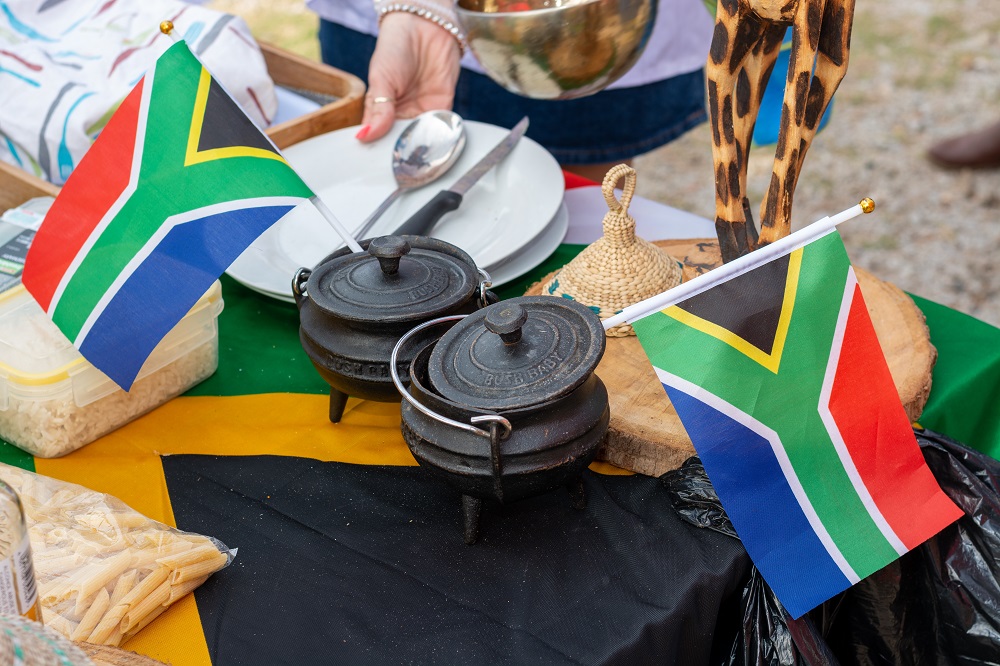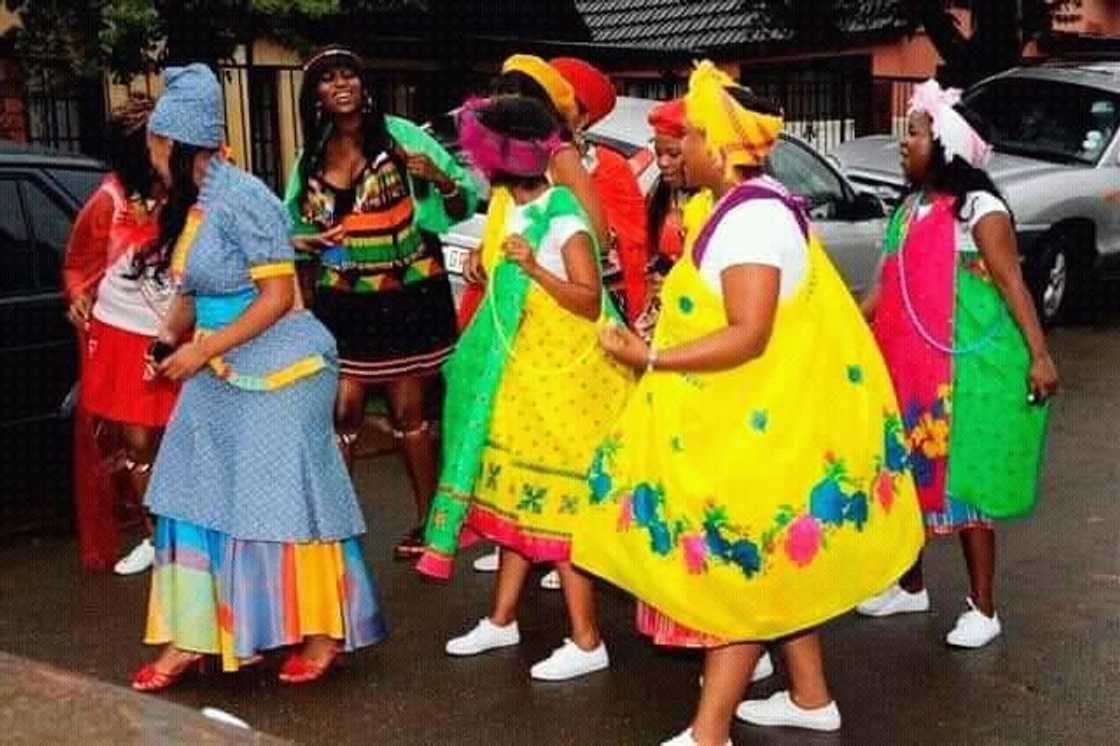Some Known Facts About South African Culture Today.
Some Known Facts About South African Culture Today.
Blog Article
See This Report on South African Culture Today
Table of ContentsSouth African Culture Today Things To Know Before You Buy7 Easy Facts About South African Culture Today DescribedSome Known Incorrect Statements About South African Culture Today The 30-Second Trick For South African Culture TodayHow South African Culture Today can Save You Time, Stress, and Money.South African Culture Today Can Be Fun For Everyone
An issue of value in Zambian towns is the passing away of liked ones. All participants of the town put cash, time and initiative with each other for the funeral of the deceased.Throughout the grieving duration; males stay outside the residence and the females remain inside your house of the deceased. After discussing the dead, the village strolls to the location of burial to say their last farewells. Songs and dancing is a very crucial element of the Zambian culture. The different tribal devices have their very own dancing types; nonetheless, makishi is typical among all tribes.
South African Culture Today for Beginners
When it comes to songs, drums are utilized the most, with a range of drumming events. In Zambia, majority of the individuals are Christian; Protestant and Roman Catholic. There are little teams of Muslims and Hindus, with the remainder complying with local indigenous tribal beliefs.

South African heritage and society is exceptionally varied, and includes several teams of individuals that each have their own traditions and ideas. Having such a variety of individuals and cultures is what makes South Africa so one-of-a-kind. In the real feeling of the expression, we are a rainbow nation.
Making it the 7th on the listing of countries with the most Portuguese individuals in it outside of Portugal. Portuguese is not only a culture, yet it is additionally a language and a nationality. Portuguese people originate from the country of Portugal in Europe, nonetheless, due to Portugal (like many other nations in Europe) checking out the globe and conquering various other countries during the 15th 20th centuries, South Africa has what we call Portuguese South African's living in it.
Getting My South African Culture Today To Work
Among the famous attributes of the topography is a plateau that covers almost 2 thirds of the center of the country. The plateau complicated increases towards the southeast, where it climaxes in the Drakensberg variety, component of an escarpment that separates the plateau from the coastal areas. The Drakensburg consists of Sparkling wine Castle, the highest possible peak in the country.
The area north of the Witwatersrand, called the bushveld, inclines downward from east to west towards the Limpopo River, which develops the international border. The western area of the plateau, the middleveld, additionally comes down in the direction of the west and differs in altitude between the highveld and bushveld. In between the Drakensburg and the eastern and southern coast, the land comes down to the sea.
Nearer the shore there is a low-lying level called the eastern lowveld. Southwest of the plateau the country ends up being progressively much more dry, giving method to the hostile desert of the Great Karroo, bordered on the east by the reduced, better watered plateau of the Little Karroo. Separating the completely dry southerly interior from the sandy coastal of the southern coast and West why not check here Cape is another variety, the Langeberg.
South African Culture Today - Truths
The country's racially, ethnically, and politically separated history has actually produced nationwide and subnational signs that still function as signs of the nation, and others symbols that are approved just by certain groups. The monoliths to white settler conquest and political prominence, such as the Afrikaner Voortrekker ("pioneer") Monument in Pretoria and the Rhodes Monolith recognizing the British colonial realm builder and Cape prime preacher Cecil Rhodes, remain sectarian signs.
The initial contemporary citizens were the San ("bushman") hunter-gatherers and the Khoi ("Hottentot") individuals, who herded animals (South African culture today). The San might have been present for hundreds of years and left proof of their presence in countless old cavern paints ("rock art"). Bantu-speaking clans that were the ancestors of the Nguni (today's amaZulu, amaXhosa, check that amaSwazi, and vaTsonga peoples) and Tswana-Sotho language groups (today's Batswana and Southern and Northern Basotho) moved down from eastern Africa as early as the fifteenth century

Both former republics of the Orange Free State and Transvaal (South African Republic) were developed by Afrikaner settlers who defeated and dispossessed the Basotho and Batswana. Lesotho would have been forcibly incorporated into the Orange Free State without the expansion of British protection in 1869. The best unification of the country resulted from the South African Battle (18991902) between the British and both Afrikaner republics, which decreased the nation to mess up at the beginning of the twentieth century.
Afrikaners historically considered themselves the only true South Africans and, while approving complete citizenship to all citizens of European descent, rejected that status to people of shade till the autonomous change of 1994. British South Africans retain a feeling of social and social link to Great Britain without damaging their identity as South Africans.
Fascination About South African Culture Today
The variety and fragmentation within ethnic groupings and the equilibrium of tensions in between those teams during the twentieth century prevented interethnic civil problem. While intergroup tensions over sources, entitlements, and political supremacy remain, those conflicts are as most likely to pit Zulu against Zulu as Zulu versus Xhosa or African against Afrikaner.
From colonial India, British vendors and managers brought the rounded metal decorative roofings and slender lace job pillars that still typify the verandas of cottages arounds and cities throughout the nation. Holy places add an essential architectural facet even in the tiniest towns. In enhancement to the rising steeples and timeless stonework of Afrikaans Dutch Reformed churches, Anglican churches, synagogues, mosques, and Hindu shrines supply variety to the spiritual architectural scene.

Slaughtering and the developing of conventional grain beer are essential in safeguarding the engagement and a good reputation of the forefathers that are taken into consideration the guardians of good luck, prosperity, and wellness. Indian neighborhoods preserve their native Full Article culinary customs and apply them on Islamic and Hindu ritual and ceremonial occasions. Afrikaners and Coloured individuals collect at weekend breaks and special events at multifamily bbqs called braais, where neighborhood bonds are reinforced.
Because this was the main economic venture of both black Africans and white homesteaders, conflict in between those teams fixated the property of grazing land and livestock. In 1867, the biggest ruby down payments in the globe were uncovered at Kimberley in the west central area. The riches from those fields aided finance the exploitation of the best gold reef in the globe, which was uncovered on the Witwatersrand in 1886.
The Ultimate Guide To South African Culture Today
This led to misconceptions and purposeful misrepresentation in the dealings of white settlers and federal government officials with African chiefs throughout the early american period (South African culture today). In the facility of African gets, some elements of communal and mainly "tribal trust" land tenure were protected, and even in white rural areas, kinds of communal period were still practiced in locations with African neighborhoods
After the autonomous change of 1994, programs for land restitution, redistribution, and reform were set up, yet development has actually been slow-moving. The white minority still regulates eighty percent of the land. Following farming land invasions in Zimbabwe, the Department of Land Affairs has actually promised to speed land redistribution.
Report this page